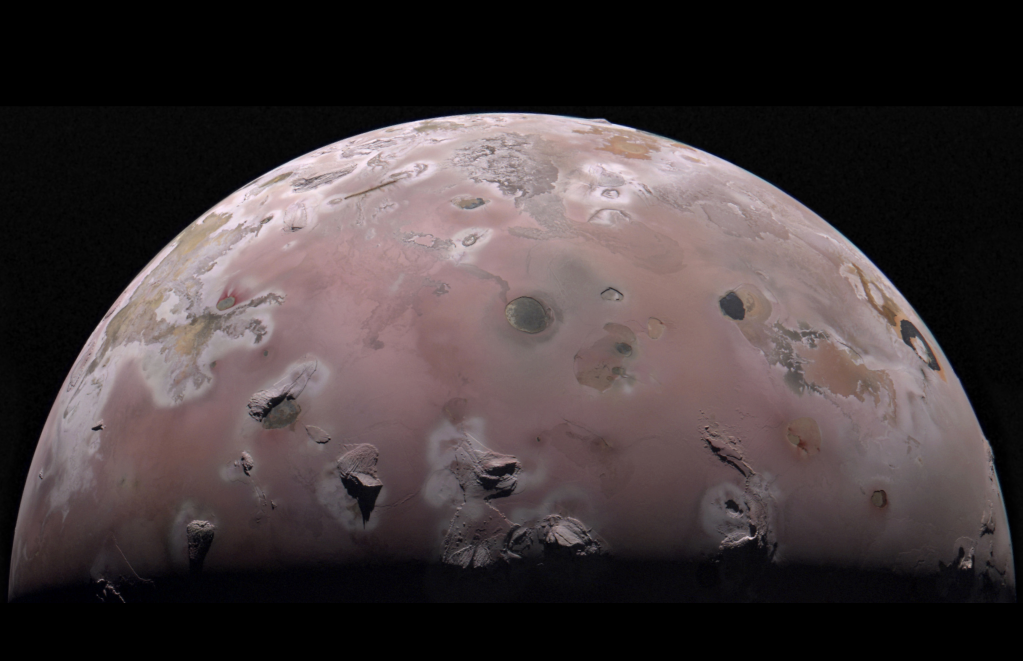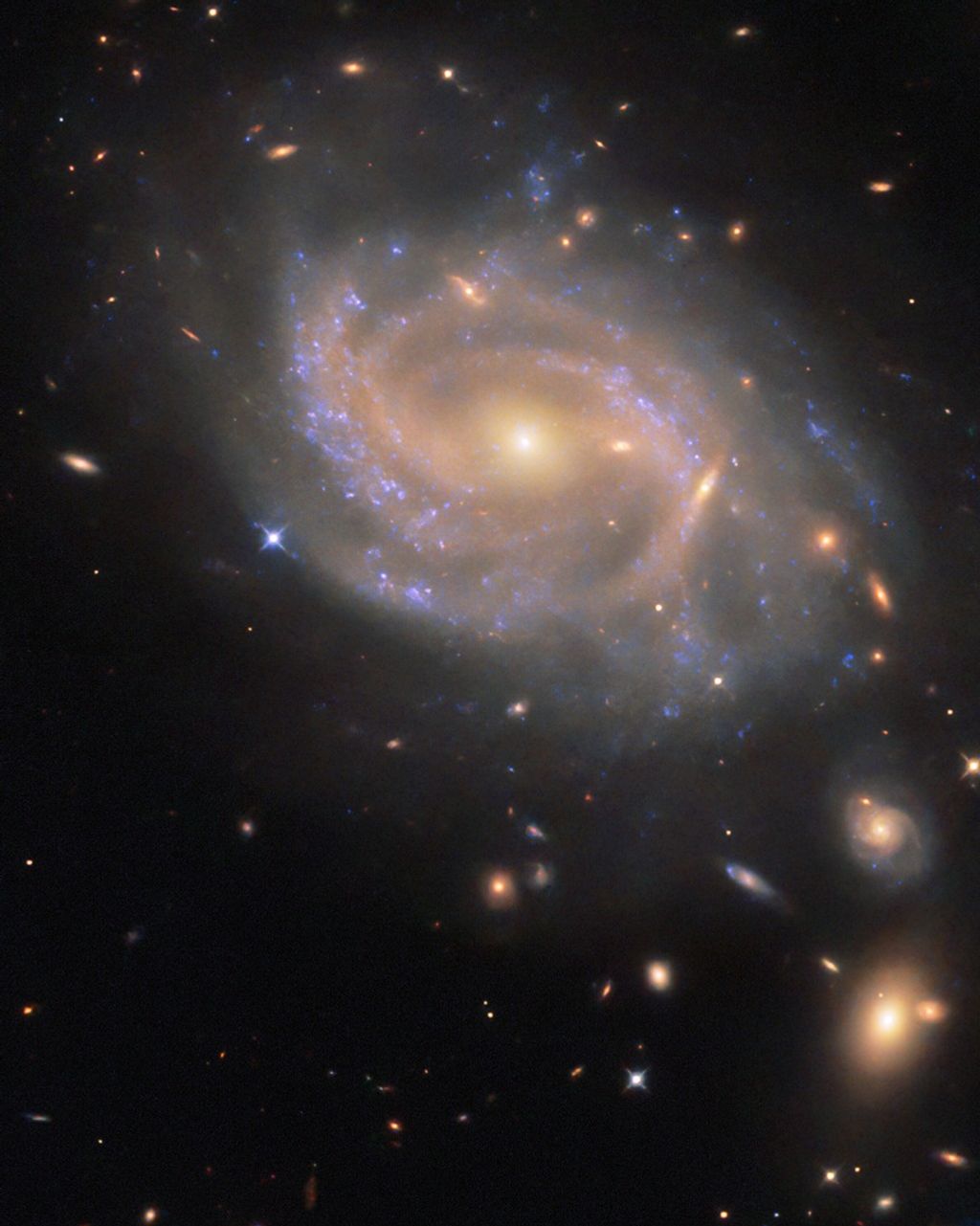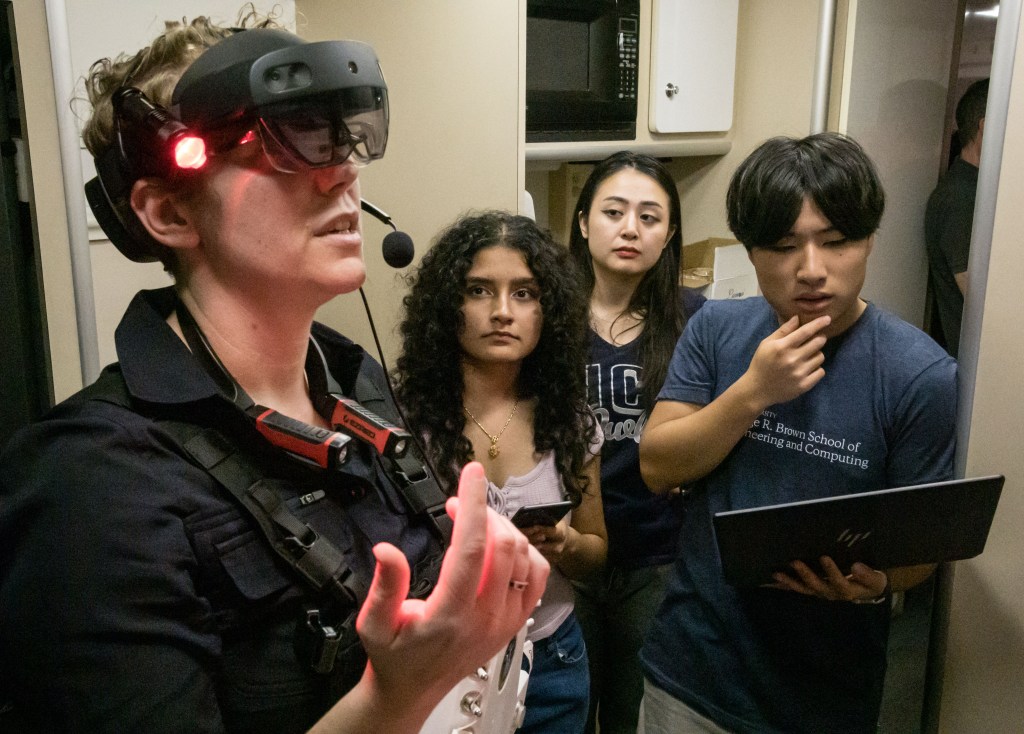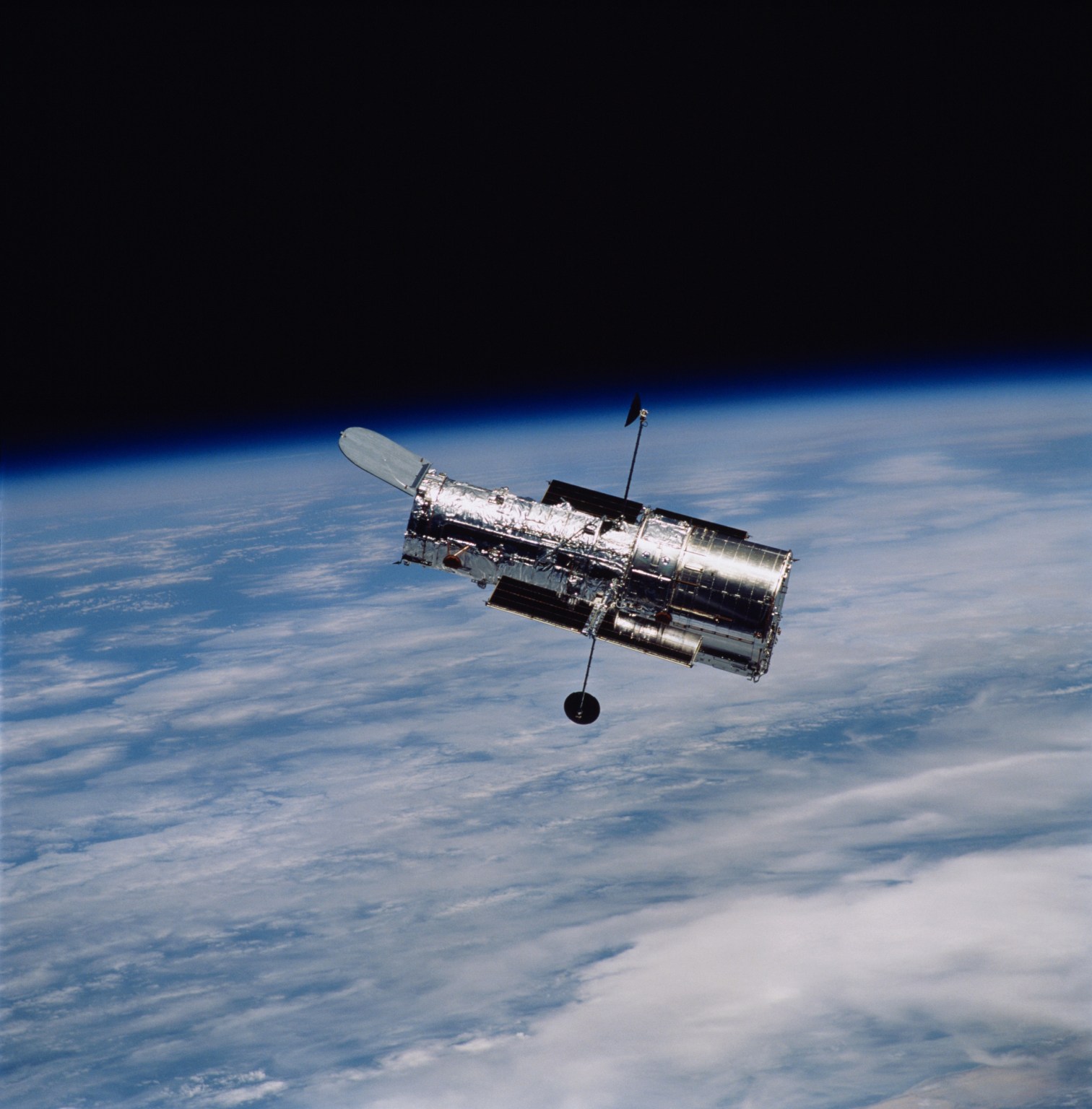1 min read
POX 186: A Tiny Galaxy is Born

The distorted shape of this tiny object, called POX 186, is evidence that it is a dwarf galaxy in the process of formation. This image, obtained by NASA's Hubble Space Telescope, shows the bluish-white glow of newborn stars at the galaxy's core, and an arch of stars (at right). Both features suggest a recent collision between two smaller clumps of stars that occurred within the past 100 million years. Gravity will eventually pull these stars together into a more symmetrical form. The red objects at the edges of the images are most likely more distant galaxies.
The Hubble images reveal POX 186 to be extremely small by galaxy standards, measuring only about 900 light-years across and containing just 10 million stars. By contrast, the Milky Way galaxy is about 100,000 light-years across and contains over 100 billion stars.
The galaxy is 68 million light-years away in the constellation Virgo. This color image was created from a composite of three pictures obtained by the Wide Field and Planetary Camera 2 in March and June 2000, and approximates what the galaxy would look like to the human eye.
About the Object
- R.A. PositionR.A. PositionRight ascension – analogous to longitude – is one component of an object's position.13h 25m 49.99s
- Dec. PositionDec. PositionDeclination – analogous to latitude – is one component of an object's position.-11° 37' 36.0"
- ConstellationConstellationOne of 88 recognized regions of the celestial sphere in which the object appears.Virgo
- DistanceDistanceThe physical distance from Earth to the astronomical object. Distances within our solar system are usually measured in Astronomical Units (AU). Distances between stars are usually measured in light-years. Interstellar distances can also be measured in parsecs.About 21 megaparsecs (68,500,000 light-years)
- DimensionsDimensionsThe physical size of the object or the apparent angle it subtends on the sky.This image is 12.7 arcseconds wide. At the distance to NGC 1705, this corresponds to roughly 1,300 parsecs (4,200 light-years).
About the Data
- Data DescriptionData DescriptionProposal: A description of the observations, their scientific justification, and the links to the data available in the science archive.
Science Team: The astronomers who planned the observations and analyzed the data. "PI" refers to the Principal Investigator.Principal Astronomers: M. Corbin (CSC/STScI) and W. Vacca (MPE, Garching) - InstrumentInstrumentThe science instrument used to produce the data.HST>WFPC2, and HST>STIS
- Exposure DatesExposure DatesThe date(s) that the telescope made its observations and the total exposure time.March 15, 2000, Exposure Time: 2 hours (WFPC2), and June 16, 2000, Exposure Time: 1.2 hours (STIS)
- FiltersFiltersThe camera filters that were used in the science observations.WFPC2: F336W (U), F555W (V), F814W (I) STIS: G140L and G230L
- Object NameObject NameA name or catalog number that astronomers use to identify an astronomical object.POX 186, PGC 046982
- Object DescriptionObject DescriptionThe type of astronomical object.Dwarf Galaxy
- Release DateDecember 19, 2002
- Science ReleaseA Tiny Galaxy is Born
- Credit
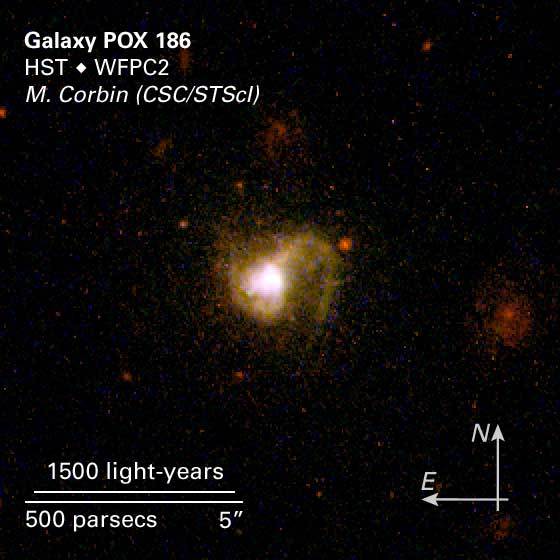
Share
Details
Claire Andreoli
NASA’s Goddard Space Flight Center
Greenbelt, Maryland
claire.andreoli@nasa.gov













